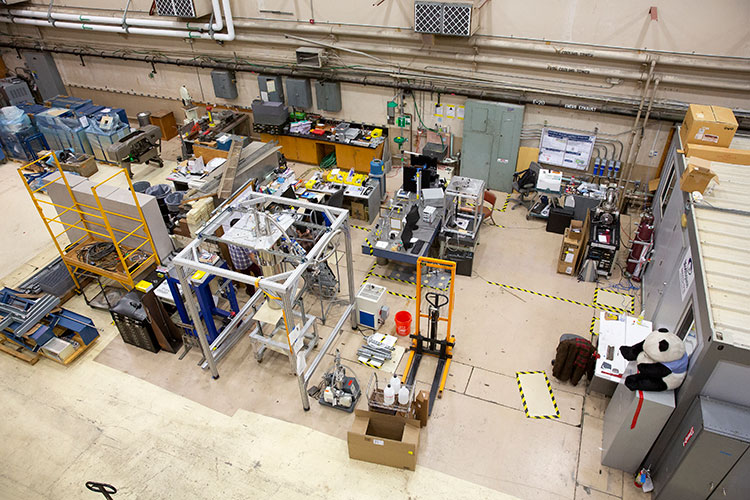Researchers harness quantum weirdness to speed the search for dark matter
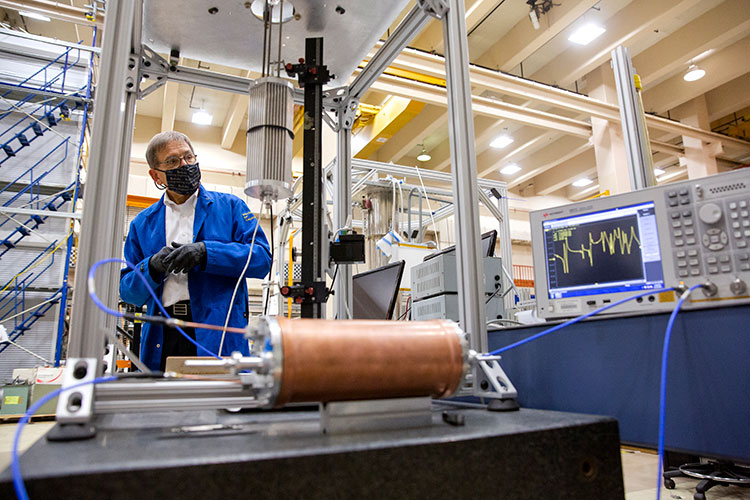
For more than a century, cosmologists have noted mysterious anomalies in the swirls of stars and galaxies in our universe: The motions of these celestial objects, which should be governed solely by the gravity of the other objects around them, instead seem to be dictated by the gravitational pull of matter that simply isn’t there — or, at least, cannot yet be observed.
Scientists have explained these strange anomalies by factoring in extra gravitational pull from seemingly invisible dark matter. Calculations now indicate that dark matter comprises about 85% of the matter in the universe, making the ordinary matter that we can see and feel something of a rarity on the cosmic scale. However, physicists still have no idea where this mysterious matter may have come from, or what it is made of.
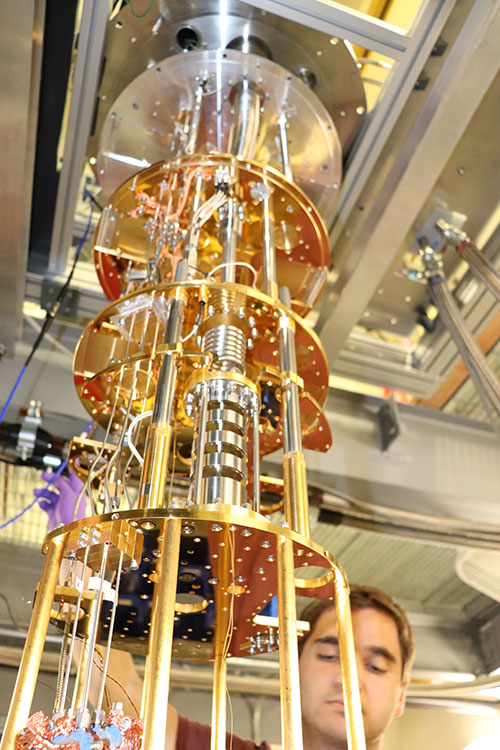
In a paper published today in the journal Nature, a collaboration of physicists and engineers from across the country describes a new experiment that harnesses the weirdness of quantum mechanics to accelerate the search for the axion, one of two leading hypothetical subatomic particles that may make up the bulk of dark matter in the universe.
“Axions were first theoretically predicted in 1978, but what the axion mass might be, or whether or not the axion even exists, is still very much a mystery,” said study co-author Maria Simanovskaia, who worked on the project as a graduate student at UC Berkeley. “Recently, people have been getting more excited about the axion as a dark matter candidate, but there is still a large open range of possible axion masses, and the faster we scan that range, the faster we can eliminate them.”
In the new study, the team shows how a technique called quantum squeezing has spurred the HAYSTAC detector, built and operated by a collaboration of researchers from Berkeley, Yale University and the University of Colorado Boulder, to search for axions at twice the speed as before. Quantum squeezing allows researchers to bring the background noise of the HAYSTAC experiment to below the “quantum limit,” a fundamental static that can obscure the tiny signal blip of an axion. By lowering this noise level, they can search through possible axion frequencies — which are mathematically equivalent to masses — at a much faster rate, without the risk of whizzing too fast past the axion signal.
“The HAYSTAC detector was already essentially at the quantum limit, and now we’ve actually found a way of circumventing the quantum limit entirely,” said co-author Karl van Bibber, executive associate dean at Berkeley’s College of Engineering and one of the senior researchers on the HAYSTAC project. “Several theoretical works are now predicting that the axion mass is right in the frequency range where HAYSTAC is ready to go next. And we’ve got the cavities and amplifiers all lined up and ready to search.”
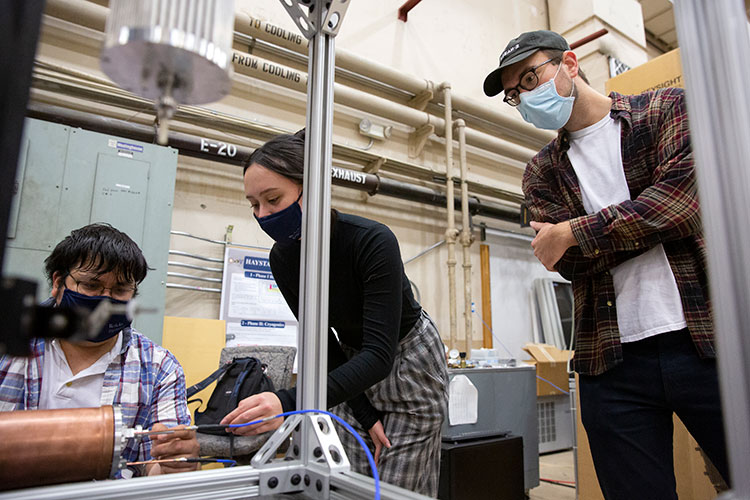
A mysterious symmetry
The subatomic particle known as the axion was first created to solve what theoretical physicists call the “strong CP problem.” Neutrons have what is known as charge-parity, or CP, symmetry: If you invert a neutron’s charges from positive to negative and look at the neutron’s behavior in a mirror, you will see no discernable differences from the original neutron. However, according to physicists’ leading mathematical model of the universe, CP symmetry should be broken.
Axions were introduced to help make sense of the strong CP problem. The axion can be thought of as an unknown field or vibration remnant from the very beginning of the universe. This field permeates all of space and helps suppress the asymmetries in the neutron.
“The axion is a very different kind of particle that comes into existence by means of a kind of a phase transition, a symmetry breaking in the early universe,” van Bibber said. “Axions are extremely light, but also extremely dense. In the halo of our solar system, they have a density of an estimated 100 trillion per cubic centimeter, compared to WIMPs, the other dark matter candidate, which are much heavier, with an estimated density of only a few per cubic meter.”
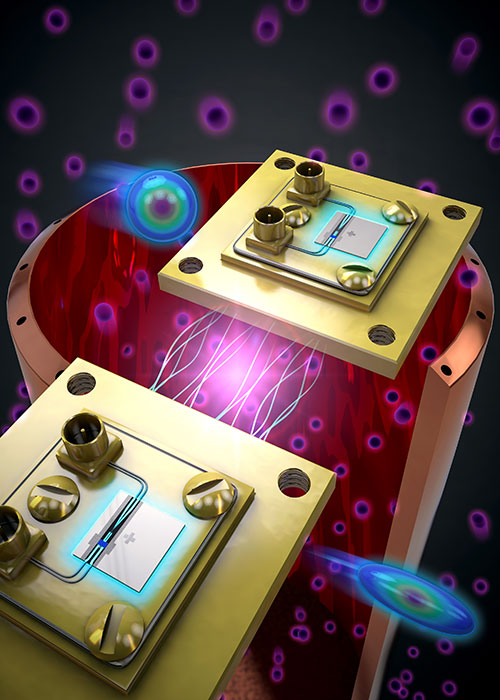
If axions could be found, they would solve two physics conundrums at once: They would explain the mystery behind the strong CP problem and provide an explanation for the nature of dark matter.
However, axions are, by their nature, hard to detect. To search for these ethereal particles, scientists are taking advantage of the fact that axions should interact with magnetic fields to generate detectable photons.
At the heart of the HAYSTAC detector sits a microwave cavity, cooled to near absolute zero and kept under a strong magnetic field. To search for axions, the team slowly tunes the resonant frequency of the cavity, looking for signal blips from the particles.
“When an axion interacts with a magnetic field, and the axion’s mass matches the frequency of the cavity, the axion’s energy can be converted into a real photon. That creates a real photon in our microwave cavity that shows up as a signal that we didn’t see before,” Simanovskaia said.
UC Berkeley students and postdoctoral researchers, led by van Bibber, are in charge of designing and manufacturing these highly sensitive microwave cavities, which must be able to resonate at electromagnetic frequencies matching those where axions are most likely to be found.
Squeezing out the noise
Because they are so light, the signals generated by axions are predicted to be vanishingly small. As a result, HAYSTAC experimenters have to scan through microwave frequencies at a painstakingly slow rate — so slow, in fact, that it could take them hundreds of years to cover the full range of frequencies where axions might be found. Between HAYSTAC and other axion experiments, only a very small range of possible axion frequencies have so far been searched.
To speed up the process, HAYSTAC scientists have been making the detector as sensitive as possible, so that they can scan faster without fear of missing axion signal. In the new study, they describe going beyond the “quantum limit,” something no axion search has achieved before.
Quantum mechanics dictates that all experiments will reach a fundamental noise level that cannot be surpassed. However, scientists recently have devised ways to essentially “squeeze” the noise in one dimension of an electric field while letting it grow in another, so that experiments can become more sensitive without violating this quantum limit.
“The noise can be thought of mathematically as a little fuzzy circle, and we can decrease the noise in one dimension, but at the expense of increasing the noise in the other dimension,” Simanovskaia said. “The axion signal accumulates equally on all sides, but the ratio of the axion signal to the noise is higher along the dimension we squeezed. In that dimension, it’s easier to see the signal, since the noise is reduced.”
The HAYSTAC collaborators at the University of Colorado Boulder developed the electromagnetic amplifiers that can prepare and detect the microwave field in squeezed states, dramatically improving the signal to noise in the experiment.
“The squeezing is a big deal that actually allowed us to speed up the experiment by a factor of two,” van Bibber said. “This is really a proof of principle that this thing works, and now we’re set up to search for the axion much faster. We’ve made some improvements that should accelerate our upcoming run by another factor of four, and our Colorado colleagues are working on a new scheme that could give us a factor of 20 in a couple of years. Then we’ll be cooking with gas.”
